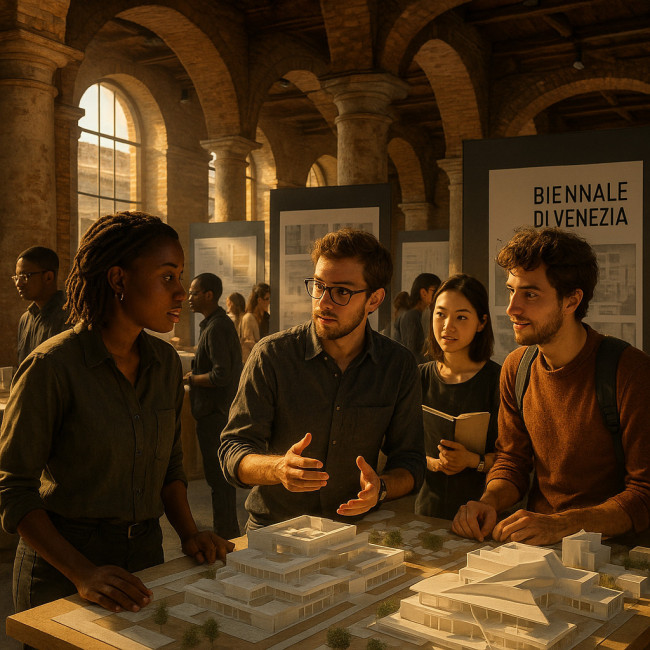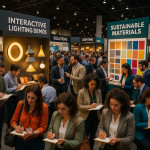Architect events abroad: funding tips for attending world design biennales
Dreaming of showcasing your studio's vision at the Venice, Seoul or Chicago Biennale but fearing the price tag? This guide helps you finance architect events abroad—covering grants, sponsorship, travel bursaries and budgeting tactics—so you can grow your global network without draining cashflow.
Why attending international design biennales matters

World biennales gather curators, public agencies and innovators who shape tomorrow's built environment. A single pavilion visit can spark collaborations, licensing deals and press that would take years to secure remotely. For early-stage practices, architect events abroad also add credibility to competition entries and online portfolios.
Typical cost breakdown for a 5-day trip
- Airfare: €450–€900 (economy)
- Accommodation: €120/night × 5 = €600
- Biennale pass & side events: €120
- Prototype shipping (if exhibiting): €400–€1,200
- Insurance & contingencies: €250
Total: €1,820–€3,070, before studio time is counted. Smart funding therefore isn't optional; it is critical.
Six funding avenues architects overlook
1. Travel & mobility grants
Many cultural bodies earmark cash specifically for overseas events. Examples include the Graham Foundation (US), Japan Foundation (JP) and Creative Europe Mobility (EU). Application windows open 6–12 months ahead, so block deadlines in the design festival calendar.
2. Exhibition sponsorships
Materials suppliers, software vendors and real-estate developers are keen on visibility. Offer tiered packages (logo on invitation, press quote, private tour) to secure €1 000–€10 000. Reuse templates from your grant proposal secrets and swap “glass” for “architecture”.
3. Institutional partnerships
Universities often underwrite faculty or alumni travel. Align your concept with their research agenda—adaptive reuse, parametric biomaterials, etc.—and piggyback on existing funding streams such as adaptive reuse grants.
4. Residency + biennale combos
Residency Stipends in cities like Copenhagen or Tokyo frequently include a production budget and public showcase slot timed with a biennale. Two wins for one application.
5. Crowdfunding with value-add
Go beyond donations. Offer backers limited-edition prints, online studio tours or co-design workshops. Transparent budgeting and regular updates convert small pledges into sizable capital.
6. Tax-deductible professional expenses
Many jurisdictions classify overseas conference costs as deductible. Keep receipts and coordinate with an accountant familiar with liability insurance basics for freelance architects to avoid compliance headaches.
Comparative table: key travel grant programs
| Program | Region | Max amount (USD) | Success rate | Key deadline |
|---|---|---|---|---|
| Graham Foundation Travel Grant | USA → global | $5,000 | 18 % | Feb |
| Creative Europe Culture Mobility | EU | $3,800 | 22 % | Rolling |
| Canada Council Travel | CA → global | $1,900 | 25 % | Aug & Jan |
| Japan Foundation Fellowship | JP ↔ global | $2,100 | 15 % | Dec |
| Design Trust Seed Grant (HK) | Asia | $10,200 | 12 % | Mar & Sep |
Visual snapshot: average travel grant amounts
Source : Open Culture Funding Index
Step-by-step roadmap to secure funding
Step 1 – Define a punchy concept
Biennale juries skim hundreds of abstracts. Lead with a problem statement—rising sea levels, social housing stigma, AI-driven public space—and state your unique architectural response in 75 words.
Step 2 – Assemble a lean budget
Separate fixed costs (registration) from variables (shipping) and show co-funding percentages. Funders rarely cover 100 %; proving 30 % self-investment signals commitment.
Step 3 – Collect proof of impact
Press clippings, carbon-neutral materials, and audience metrics help evaluators see ROI. Embed links to your spatial design event portfolio to validate past success.
Step 4 – Map application timelines
- Identify biennale opening date.
- Count back 12 months for large grants, 6 months for sponsorship pitches, 3 months for crowdfunding.
- Lock print-ready deliverables 4 weeks before shipping.
Step 5 – Craft a compelling deck
Borrow storytelling cues from brand strategists: tension, insight, resolution. Use high-impact renders, succinct bullet points and conclude with a QR code linking to a VR walkthrough.
Step 6 – Follow up professionally
Two weeks after submission, send a concise status email. Highlight any fresh press or jury shortlists to keep momentum alive.
Common mistakes that sink applications
- Overpromising deliverables without factoring freight lead times.
- Submitting draft floor plans as “final visuals”.
- Ignoring equity, diversity and inclusion criteria—now a scoring pillar for most funders.
- Budget lines missing volunteer hours (valued in-kind contributions count!)
Networking on site—stretch funding further
Once your ticket is booked, maximise value. Schedule meetings via biennale directories, volunteer as a session moderator, and capture process footage for marketing back home. This amplifies returns and bolsters next-round funding narratives.
Mini quiz: test your funding readiness
FAQ
- Can I apply for multiple grants for the same biennale trip?
- Yes, provided you disclose all sources and avoid exceeding 100 % of the total budget. Panels often welcome co-funding.
- What's the optimal team size for funded exhibitions?
- Two to four people keeps travel costs reasonable while ensuring installation support. Larger teams need stronger impact evidence.
- How early should I book freight for prototypes?
- Book sea freight 12 weeks out; air freight 4 weeks. Add buffer days for customs and unexpected strikes.
Take the next step
Architect events abroad aren't reserved for big firms. With the right funding mix, your voice can resonate on a global stage. Start drafting that concept note today and turn the next biennale invite into a career-defining milestone.











